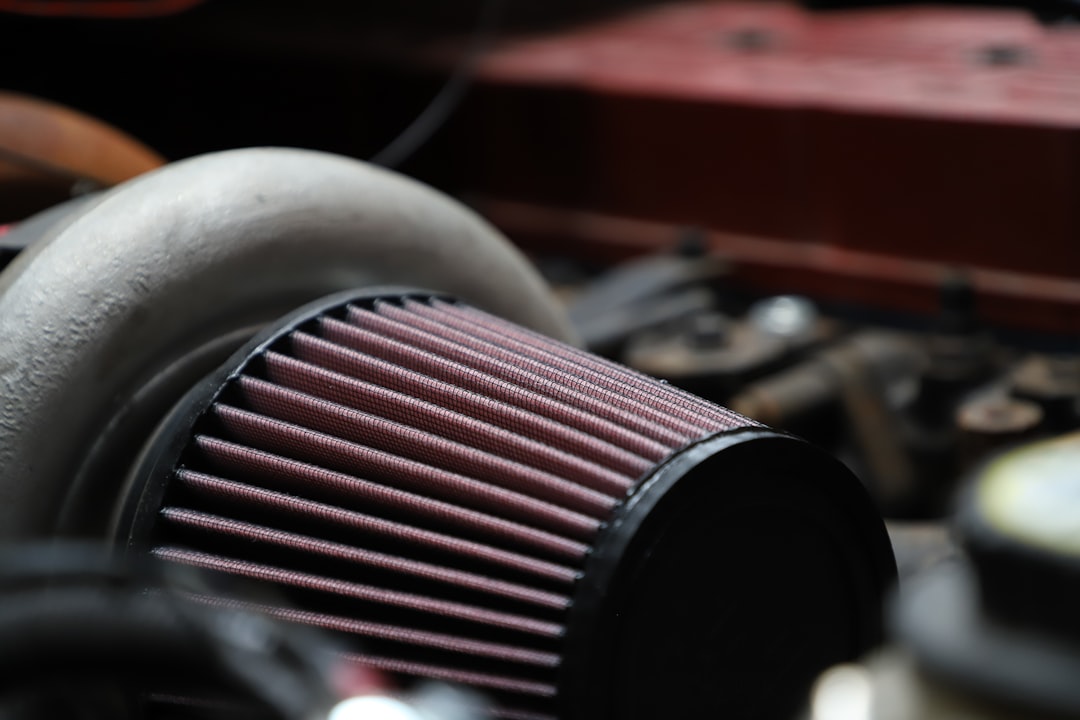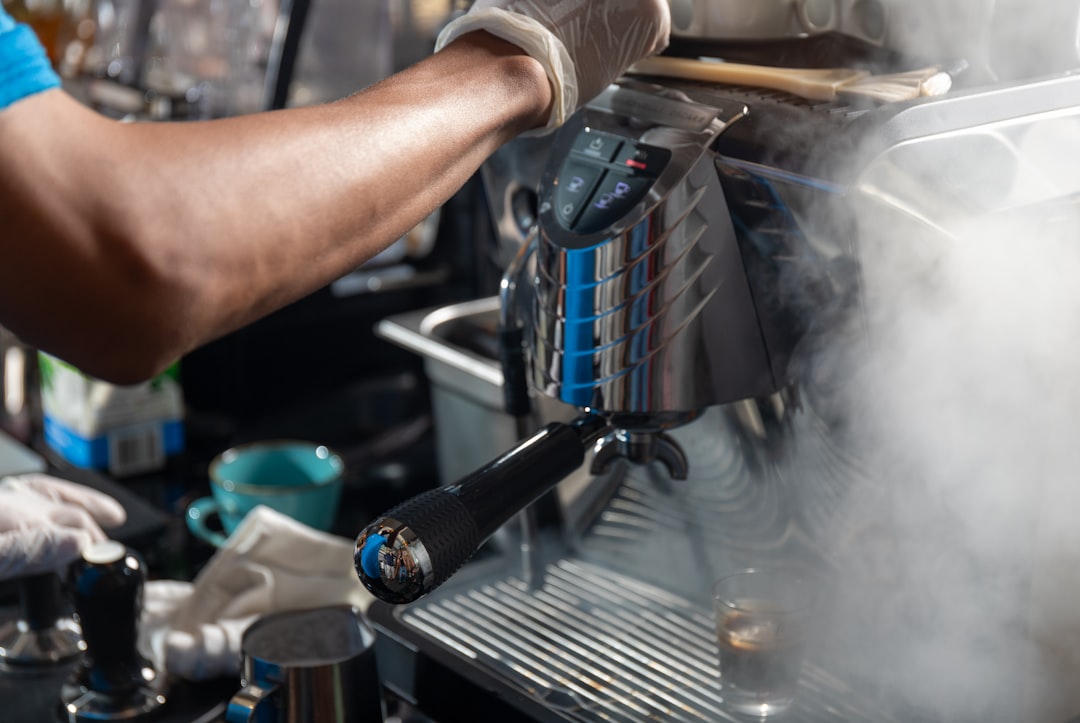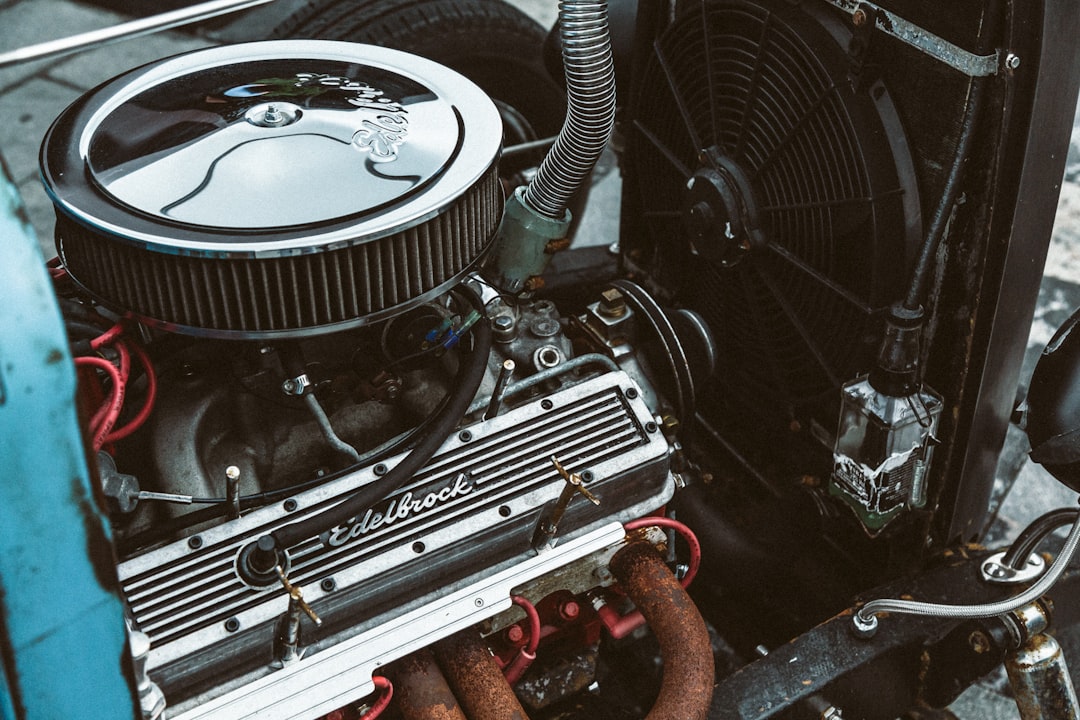

Engage prospects with a scan and streamline customer engagement with FREE QR code marketing tools by Sona – no strings attached!
Create a Free QR CodeFree consultation

No commitment

Engage prospects with a scan and streamline customer engagement with FREE QR code marketing tools by Sona – no strings attached!
Create a Free QR CodeFree consultation

No commitment
In today’s digitally driven environment, QR codes have evolved beyond a technical novelty to become a vital tool for bridging the gap between hands-on technician work and seamless digital support in auto air conditioning services. Service providers are increasingly challenged by lost paperwork, fragmented maintenance records, and missed chances to track high-value prospects or critical service milestones. QR codes help overcome these pain points by connecting physical components and paper assets to up-to-date technical content, digital service logs, and streamlined troubleshooting workflows, delivering solutions without the need for lengthy training or complicated apps.
This is particularly impactful as field technicians must contend with rising demands for accuracy, faster service turnarounds, and compliance with eco-friendly regulations. Traditional paper-based processes lead to incomplete or outdated job data, miscommunication, and extra administrative work, often resulting in missed revenue and customer frustration. By digitizing logs, simplifying part lookups, and ensuring immediate access to tailored repair guides, QR codes help close these operational gaps. This results in consistently higher service quality, less wasted time, and measurable improvements in both efficiency and customer satisfaction.
This guide examines how QR codes can be leveraged across auto air conditioning workflows to empower technicians, streamline operations, and address persistent industry challenges such as missed prospects, fragmented data, and time lost on manual updates. For more industry-specific ideas, explore Sona QR’s HVAC marketing strategies.

Many service providers struggle with cumbersome paperwork, forgotten maintenance logs, and the risk of missing actionable data because vital information is not captured reliably. QR codes allow technicians to bridge this gap by connecting real-world repair tasks directly with digital troubleshooting, documentation, and on-demand support. Strategically placing codes on equipment, vehicle components, and job documentation provides instant access to repair forms, service histories, and environmental compliance information, helping technicians avoid rework traced to incomplete or lost records.
To turn this into a repeatable system, pair QR codes with a centralized platform that updates destinations without reprinting, routes each scan to the right action, and feeds structured data back into your CRM and job management system. This replaces error-prone analog steps with consistent, guided workflows that technicians can use in seconds, even when working in tight spaces or variable lighting.
A unified QR management solution like Sona QR helps automate code generation, ensures every scan fetches the most current resources, and lays the foundation for more accurate, connected account records. This structure is the antidote to common analog challenges such as mistakes from handwritten job sheets, missed upsell triggers due to missing digital histories, and inconsistent recordkeeping.

Technicians and managers in this field face mounting complexity: tracking compliance across refrigerants and recovery equipment, keeping pace with new AC systems and EV heat pump designs, and ensuring no prospect or critical asset falls through the cracks. Paper logs, fragmented CRMs, and lost maintenance histories lead to incomplete customer records and anonymous service gaps that hamper personalization and follow-up.
The power of QR codes is their ability to transform any physical touchpoint into a digital action with context. When a technician scans a code on a manifold gauge, for example, they can load a mobile-optimized troubleshooting flow, auto-log the task to the work order, and capture any parts needed. When a customer scans an appointment card, they can check in, authorize work digitally, and opt into aftercare tips, all with measurable engagement data.
Practical integrations make the benefits tangible. QR codes on appointment cards guide customers to online check-ins, while codes on invoices collect post-service feedback through short Google Forms QR codes. These use cases directly address the industry’s struggle with incomplete engagement and missed revenue moments.

Auto air conditioning services operate in a fast-paced, physical environment with heavy reliance on printed labels, toolkits, and service paperwork. The right QR code formats align with these realities by linking the right content to the right action at the right moment. Choosing formats deliberately also makes it easier to standardize training, reduce errors, and capture reliable data.
Static codes are suitable for permanent reference materials that will not change, such as a safety poster. Dynamic codes are ideal for anything that might evolve, such as updated diagnostic decision trees, seasonal promotions, or revised refrigerant handling procedures. With a centralized tool, you can switch destinations without reprinting and measure performance across placements.
Dynamic QR management lets you standardize these formats and destinations across teams. As your content library grows, you can map codes to categories like troubleshooting, compliance, aftercare, and marketing, then report on usage by category and placement.
Growth opportunities in auto air conditioning services are often obscured by fragmented data across CRMs, job sheets, point-of-service touchpoints, and technician notes. QR codes illuminate these blind spots by capturing signals at the exact moment of interest and feeding them into your systems for follow-up. The result is improved retention, better upsell targeting, and smoother handoffs between technicians and customer service.
Start by mapping your physical environment and workflows. Identify jobs that frequently require repeat visits, vehicles with recurring issues, and bottlenecks like authorization delays or parts backorders. Then place QR codes where they will be most natural to scan: at tool benches, on the inside of vehicle bay doors, and near customer waiting areas. Each scan becomes a data point that supports both operational improvement and marketing precision.
When QR placements align with technician routines and customer touchpoints, service organizations build complete account histories. This completeness reduces churn risk and closes long-standing segmentation gaps in follow-up marketing.

The most effective QR deployments focus on high-friction moments in the technician and customer journey. Prioritize use cases that reduce time on task, improve data integrity, and create natural on-ramps for follow-up campaigns. The following examples align with common shop workflows and customer expectations.
By standardizing these use cases, teams also build a repeatable content system that grows more effective as data accumulates. You will learn which guides actually cut diagnosis time, which aftercare messages drive loyalty sign-ups, and which placements produce the most customer reviews.
Auto AC services often miss high-value prospects because interactions are anonymous, unstructured, or not synced to the CRM. QR-driven workflows make audience building almost automatic. Each scan carries useful context such as the channel, content type, and timing, all of which help segment audiences for more relevant follow-up. See Sona’s Playbook intent-driven retargeting.
Segmenting your audiences by scan intent and journey stage allows you to tailor messaging that matches the customer’s immediate need. Someone who scanned a diagnostic guide on variable displacement compressors needs different content than a customer who scanned a loyalty sign-up after service. With dynamic QR codes managed in a central platform, you can tag these interactions and trigger specific sequences without manual reconciliation.
With modern QR analytics, you can build these audiences without duplicative setup or manual imports. For example, repeated scans by a technician on feature-rich units can trigger targeted upskilling modules, while a customer who engaged post-service is automatically added to a loyalty or referral campaign.
A persistent struggle in auto air conditioning marketing is incomplete attribution and inconsistent engagement data across print, digital, and in-person channels. QR codes close this gap by unifying scan interactions across media and linking them to CRM records for a single account view. The result is better message sequencing, smarter budget allocation, and more accurate forecasts. For measurement frameworks, read Sona’s blog the essential guide to offline attribution.
By pairing each physical asset with a code and a clear call to action, you transform one-way materials into two-way interfaces. A brochure becomes a booking tool, a poster becomes a quote request, and a training handout becomes a dynamic resource hub. Each interaction generates data that informs your next move and makes campaigns more efficient.
QR codes act as the offline onramp to your digital marketing engine. With a centralized platform, you can manage codes across channels, monitor performance, and sync scan data to your CRM and ad platforms so each touchpoint contributes to a connected journey.
A thoughtful rollout plan prevents fragmented deployments and ensures every scan ladders up to measurable business outcomes. Consider technician workflows, customer behavior, and the physical environment. Then design your campaign so it feels natural to scan, easy to understand, and obviously beneficial.
The following checklist maps a practical path from idea to impact. Use it to prioritize use cases, align stakeholders, and build the analytics foundation for ongoing optimization.
Identify the specific analog friction you want to eliminate or the data gap you want to close. For auto AC services, common goals include digitizing technician logs, accelerating authorizations, capturing after-service feedback, or promoting eco-friendly upgrades during seasonal tune-ups.
Align the use case with a clear business outcome. Examples include reducing repeat visits by deploying scan-to-troubleshoot guides, increasing review volume and quality by adding QR prompts to invoices, or improving upsell acceptance by educating customers on green refrigerants through waiting room signage.
Choose dynamic QR codes for any destination that may change such as promotions, diagnostic flows, or training content. Dynamic codes support real-time tracking, destination editing, and retargeting integrations without reprinting.
Reserve static codes for long-lived assets whose content does not change. In most operations-focused cases, dynamic codes deliver better flexibility and data capture, making them the default recommendation.
Design with clarity and brand consistency. Include your logo, shop colors, and a readable frame. Pair each code with a benefit-driven call to action like Scan for leak test checklist or Scan to book AC recharge.
Test scannability on multiple devices, at different angles, and in varied lighting conditions typical of service bays. Ensure sufficient contrast, adequate size for scanning distance, and placement where technicians can scan safely without interrupting their workflow.
Roll out codes on diagnostic tools, work orders, technician lanyards, service bay signage, invoices, and aftercare handouts. Match each placement to the intended behavior such as scanning during diagnosis versus while waiting for pickup. Add codes to lanyards using badges for quick team access.
Coordinate with operations and front-desk staff so they understand the purpose and can encourage usage. Use a centralized system to consolidate scan data and prevent fragmented histories across departments.
Monitor scan analytics by time, location, device, and content type. Identify which touchpoints drive engagement or repeat business. Review drop-off points and iterate on content, calls to action, and placement to reduce friction.
Establish a regular optimization cadence. For example, update troubleshooting flows quarterly, refresh seasonal offers, and audit underperforming placements. Share wins and insights with the team to sustain adoption.
A robust campaign management tool streamlines each step, safeguards against inconsistent data, and eliminates confusion caused by scattered QR initiatives.
A major pain point for auto air conditioning businesses is the difficulty of linking field engagement to revenue, especially when technician interactions are untracked or scattered across platforms. QR-enabled analytics change this dynamic by capturing the who, where, and why of each scan and tying it to outcomes like bookings, parts orders, or reviews. For strategic context, read Sona’s blog the importance of accurate revenue attribution.
Your goal is to see the complete picture: the asset scanned, the content viewed, the action taken, and the revenue influence. This level of visibility turns QR codes into a performance channel rather than a novelty. It also supports continuous improvement by revealing which resources reduce job time or increase customer satisfaction.
With integrations to customer profiles and job tracking, managers gain a consolidated view that eliminates data silos. This ensures that marketing and operations work from the same source of truth and that QR codes contribute to measurable revenue impact.
Sustainable success comes from consistent deployment, clear calls to action, and connected systems. Start with the use cases that eliminate obvious pain, then expand into customer education and loyalty to compound gains. Training your team and auditing performance regularly are as important as the codes themselves.
Consider pairing QR programs with incentives. For example, offer a small discount for scanning an aftercare guide and completing a quick survey, or enter reviewers into a monthly drawing. This nudges adoption and generates feedback that guides service improvements.
Creative deployment ideas include a QR on magnetic bay boards that opens the day’s job list, or a QR on window hang tags that links to a live status update and estimated completion time. Small touches like these reduce phone traffic and create a modern, transparent service experience.

Practical stories make the advantages tangible. Shops that commit to QR-driven workflows consistently report less rework, smoother communication, and better documentation. They also gain a deeper understanding of what customers and technicians actually use, which sharpens both content and operations.
These examples illustrate how QR codes can unlock measurable improvements without heavy IT investment. In each case, success hinged on pairing clear calls to action with relevant destinations and tracking everything centrally.
QR codes work best when they are obvious to scan, aligned with a clear next step, and maintained as living assets. The most common pitfalls are vague calls to action, poor placement that hinders scanning, and out-of-date destinations that erode trust. A little planning goes a long way toward avoiding these issues and maximizing ROI.
Interview insight: An auto AC technician emphasized that QR-powered digital content reduced repair time by up to 15 percent thanks to instant access to current troubleshooting steps and fewer ambiguities compared to static documents. Customers echo this, noting smoother interactions and greater trust in transparent, tech-enabled workflows.
Fully adopting QR code technology across technician operations, customer interactions, and marketing channels enables auto air conditioning services to resolve persistent issues with missed opportunities, fragmented data, and inefficient engagement. With modern QR platforms, rolling out, managing, and analyzing these initiatives becomes intuitive, ensuring each scan signals actionable intent and builds precise, data-driven profiles. For organizations seeking to unify physical and digital processes, QR codes provide a foundation for scalable improvement, not a stopgap, and a blueprint for more responsive, connected, and profitable service delivery. Start creating QR codes for free.
QR codes have transformed auto air conditioning services from routine maintenance tasks into seamless, tech-driven experiences that empower technicians and enhance customer satisfaction. By integrating QR codes, service providers can instantly access equipment history, troubleshooting guides, and service records on the spot—streamlining repairs and reducing downtime. Imagine technicians completing diagnostics faster while customers enjoy transparent, efficient service that builds trust and loyalty.
With Sona QR, you gain the ability to create dynamic, trackable QR codes tailored specifically for your service operations. Update service instructions in real time without reprinting, monitor scan engagement to optimize technician workflows, and connect every interaction to measurable outcomes like faster repairs and repeat business. No more guesswork—just smarter service management that drives growth.
Start for free with Sona QR today and revolutionize your auto air conditioning services by turning every scan into a faster fix, happier customer, and stronger bottom line.
Choose a provider that uses digital tools like QR codes to ensure accurate maintenance logs, quick access to up-to-date repair guides, and streamlined technician workflows for faster and higher-quality service.
Signs include reduced cooling efficiency, unusual noises during operation, leaks, or failure to maintain proper temperature, which technicians can quickly diagnose using QR-linked troubleshooting guides.
The article does not specify exact repair or replacement costs but emphasizes that QR code technology can reduce diagnostic time and errors, potentially lowering service expenses.
Regular maintenance supported by QR-enabled service logs improves first-time fix rates, ensures compliance with environmental regulations, reduces repeat visits, and enhances overall customer satisfaction.
Indicators include inadequate cooling, strange sounds, or leaks, and technicians can use QR code access to model-specific repair instructions and diagnostics to identify issues efficiently.
QR codes connect physical components and paperwork to up-to-date digital resources, streamline recordkeeping, reduce errors, speed up diagnostics, and enable seamless technician and customer engagement.
Place QR codes on diagnostic tools, vehicle components, work orders, service bay signage, invoices, and customer materials to provide instant access to relevant guides and capture engagement data.
Dynamic QR codes are recommended for content that changes frequently, like diagnostic flows and promotions, while static codes suit permanent reference materials such as safety posters.
They provide technicians immediate access to current environmental compliance checklists and refrigerant handling procedures, reducing risks associated with outdated paper-based records.
QR codes enable digital check-ins, aftercare tips, feedback collection, and review requests, improving transparency, engagement, and loyalty through convenient mobile access.
Design codes with clear calls to action, ensure scannability in typical work environments, deploy codes where scanning is natural, and use a centralized platform to track and optimize performance.
They provide instant access to updated repair manuals, troubleshooting workflows, and service histories, reducing diagnostic time and errors while improving first-time fix rates.
Yes, each scan captures context such as content type and timing, enabling segmentation and targeted follow-up campaigns integrated with CRM and advertising platforms.
Avoid vague calls to action, poor placement that hinders scanning, and outdated destinations; regular maintenance, staff training, and clear communication help maximize ROI.
They link technician and customer interactions to outcomes like bookings and parts orders, providing visibility into which resources and workflows drive measurable business results.
Examples include QR-linked maintenance logs, real-time troubleshooting guides on diagnostic devices, customer aftercare surveys, and eco-friendly upgrade promotions.
Use Sona QR's trackable codes to improve customer acquisition and engagement today.
Create Your FREE Trackable QR Code in SecondsJoin results-focused teams combining Sona Platform automation with advanced Google Ads strategies to scale lead generation

Connect your existing CRM

Free Account Enrichment

No setup fees
No commitment required

Free consultation

Get a custom Google Ads roadmap for your business






Launch campaigns that generate qualified leads in 30 days or less.
